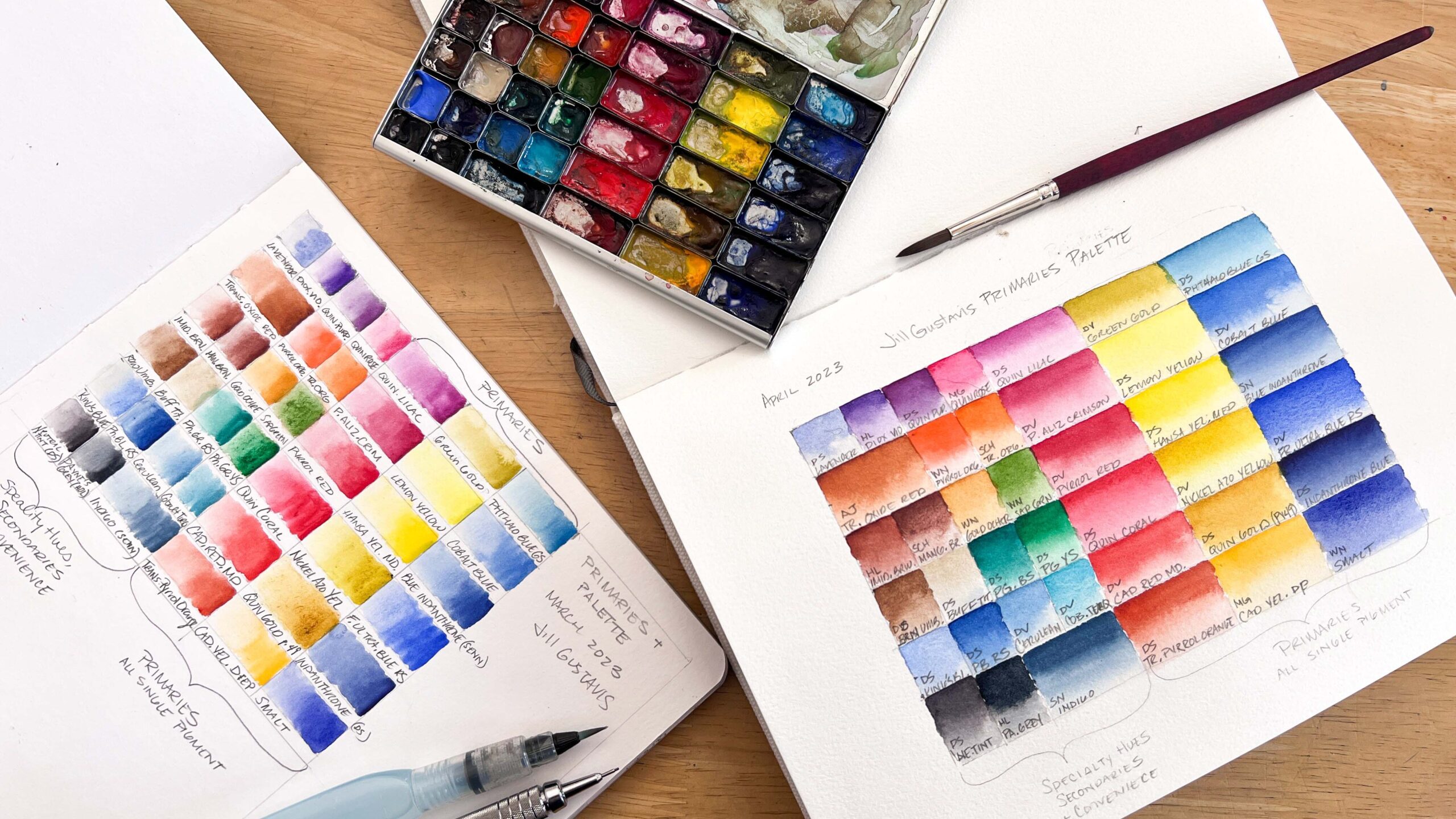
Watercolor swatches are not only beautiful and interesting, but they can tell you a lot of information. Depending on how you swatch, you can gain important insight into your paint, brush, or paper. How do you swatch?
I love doing swatches of my watercolors. The way the color dances in the water on the page, without any need to be anything; it’s so relaxing. I may often warm up for a painting session with “a few” swatches but quickly find I’ve spent “a few” hours just playing with color. Best use of #sorrynotsorry in my opinion.
I often share my swatches and get lots of question on all aspects of the session. As artists we love to revel in the possibilities open to us. What colors was I swatching? What paper are you using? What brush is that? Changing any one of those options changes the result.
Materials and options aside, is there a right way to do a watercolor swatch? Not really. Are there tips to get the most of of them? You bet. I’ll go through some of my insight on creating informational and inspirational watercolor swatches.
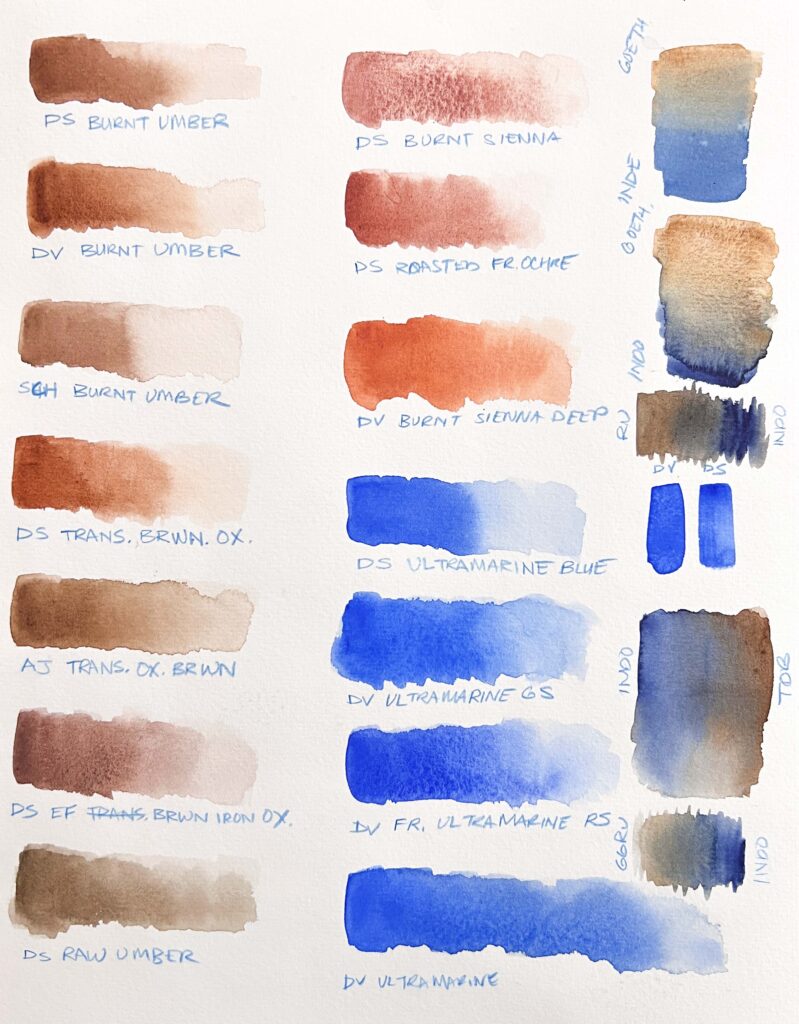
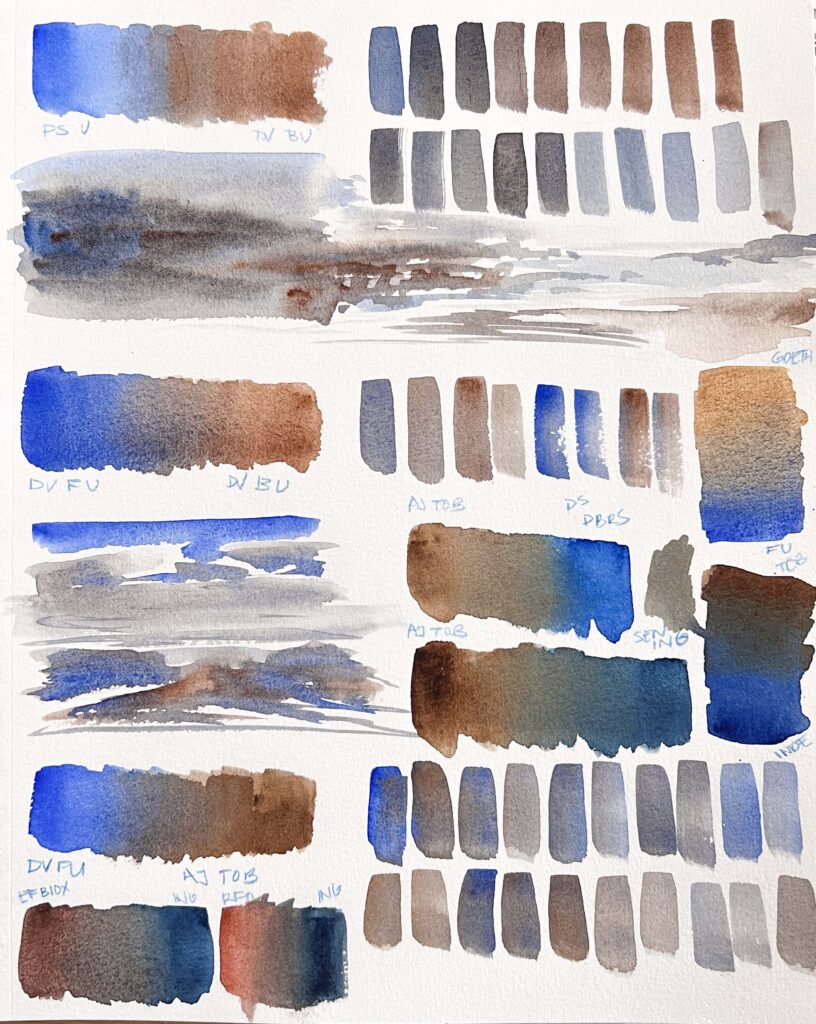
Materials
You can use swatches to experiment or feel out each of the different supplies used for watercolor. The obvious example is paint, its color, value range, handling properties, etc. You can also do swatches to test out a new brush or paper you’re unfamiliar with. For this post, I’ll be concentrating on using swatches to explore paint.
Types of Watercolor Swatches
First. Why swatch? Let me list some reasons I swatch…
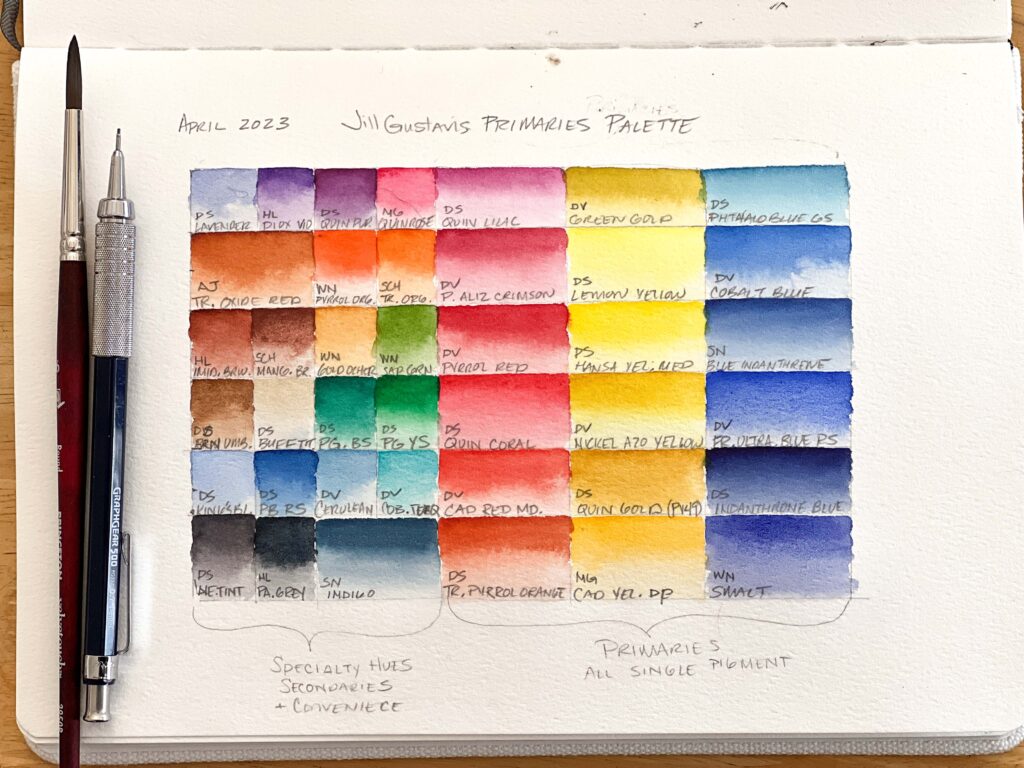
Recording your Palette
I often swatch out the colors in my palette. My Primaries Palette here got lots of questions when I used it recently. Swatching a palette chart helps me remember what’s what once the paint is dry as well as once I’ve edited it. For example, I’ve swapped what colors are in my Portable Landscape Palette lately.
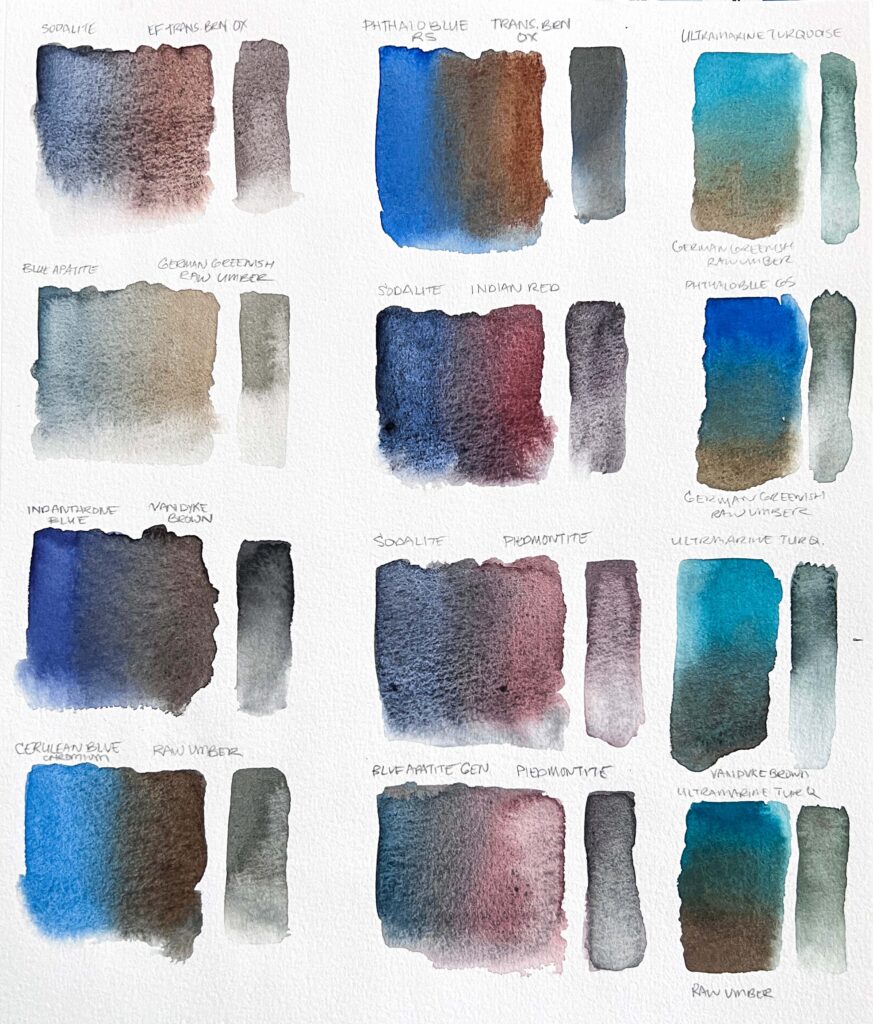
Exploring colors
New paints you need to feel out? Suddenly inspired by mixing neutrals? Get swatching to find out everything you’ll ever want to know about a specific color or the range of colors around it.

Specific Mission
Is there a color in your newest painting that you just can’t nail? Time for swatches. Maybe it’s not the color, but the layering order you’re working out? Swatches can tackle that too.
Also remember to take notes if you’re trying out things! If you’d like to see more examples or learn how I record exploratory sketchbook pages, check out my class Problem Solving in Your Sketchbook on Skillshare!
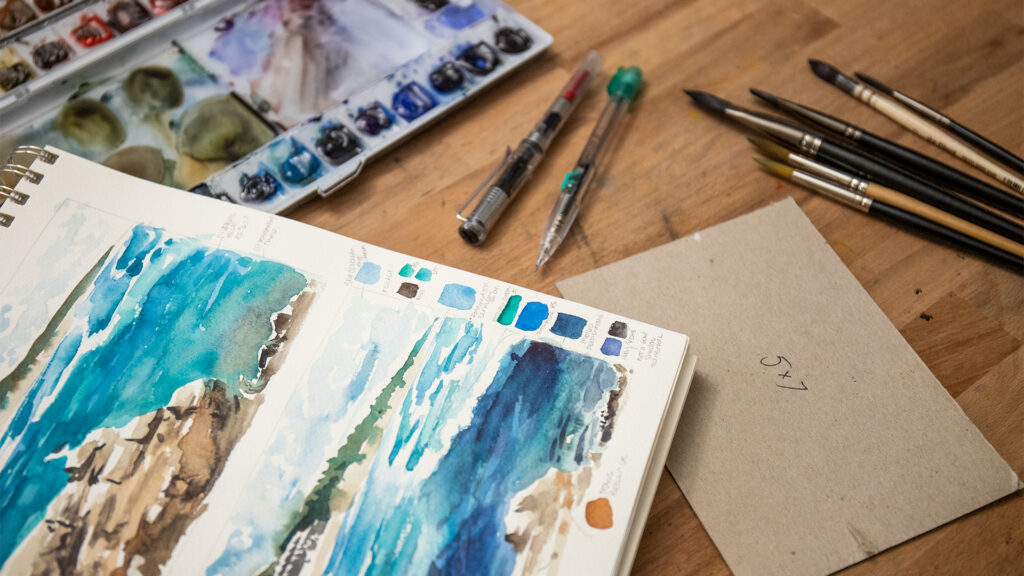
How to Swatch
Depending on the info you’d like to know or if you’re playing around for inspiration, there’s different ways or styles in which you can swatch your watercolors. Here are a few of my favorites.
Intuitively
As the name implies, intuitive swatching lets you jump in however feels natural to you! Most artists feel swatching a small circle , square, or rectangle comes naturally. Just getting paint on the paper is step one.

Structured
Looking for a tidy look? Use thin washi tape to create neat boxes. Studying transparency? Try graduated swatches over a black pen line, going from concentrated to dilute color (pictured here). Now, if you’re into layering, then try glazing swatches by layering additional color(s) over dry layers.

Freeform
Did what started as a small section of swatches turn into a mass of color running together? Not a problem, just seeing how colors interact qualifies as swatching in my book. Maybe this puddle of color will inspire you to try wet-in-wet washes!
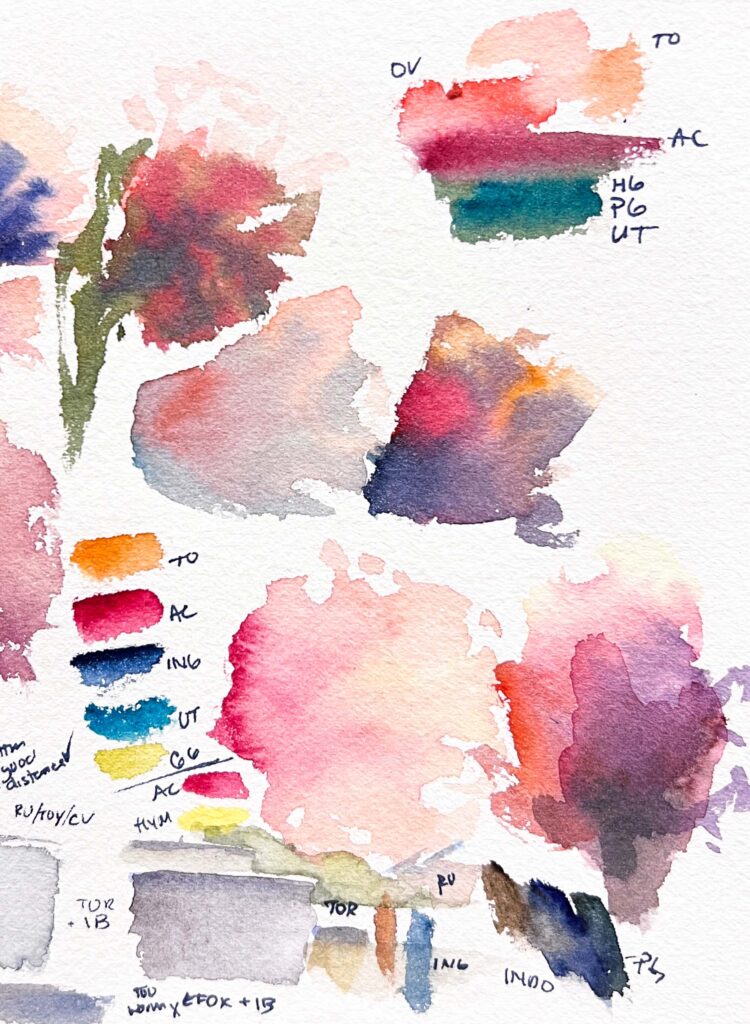
During your session, don’t be afraid to mix them all up too! This aren’t hard and fast rules and there’s no right or wrong way to fill a page or two with swatches.
Where Will Your Swatches Guide YOU?
Often the benefits from swatching are multifold. You get info immediately from every swatch, like color, value, and pigment behavior. In the end, sometimes it’s the process as a whole that unlocks new potential and new ideas. Just getting the water and paint to flow is sometimes enough. Now it’s time to grab your supplies and start swatching!